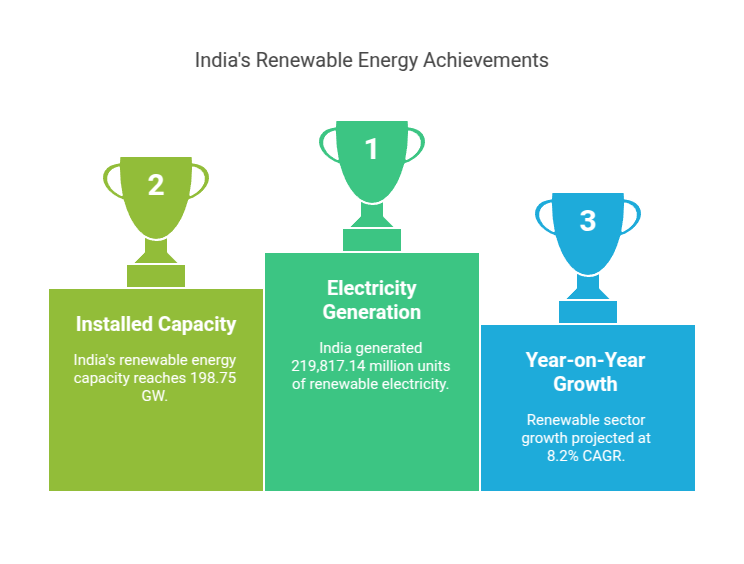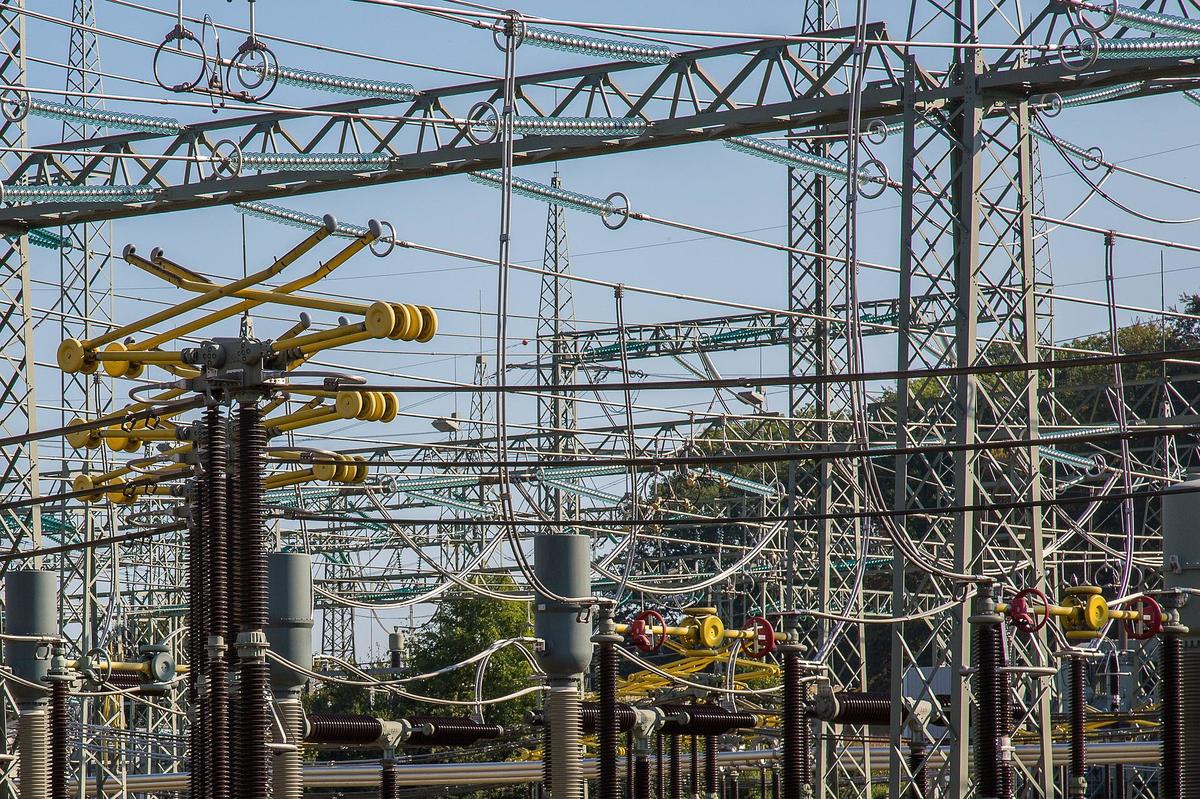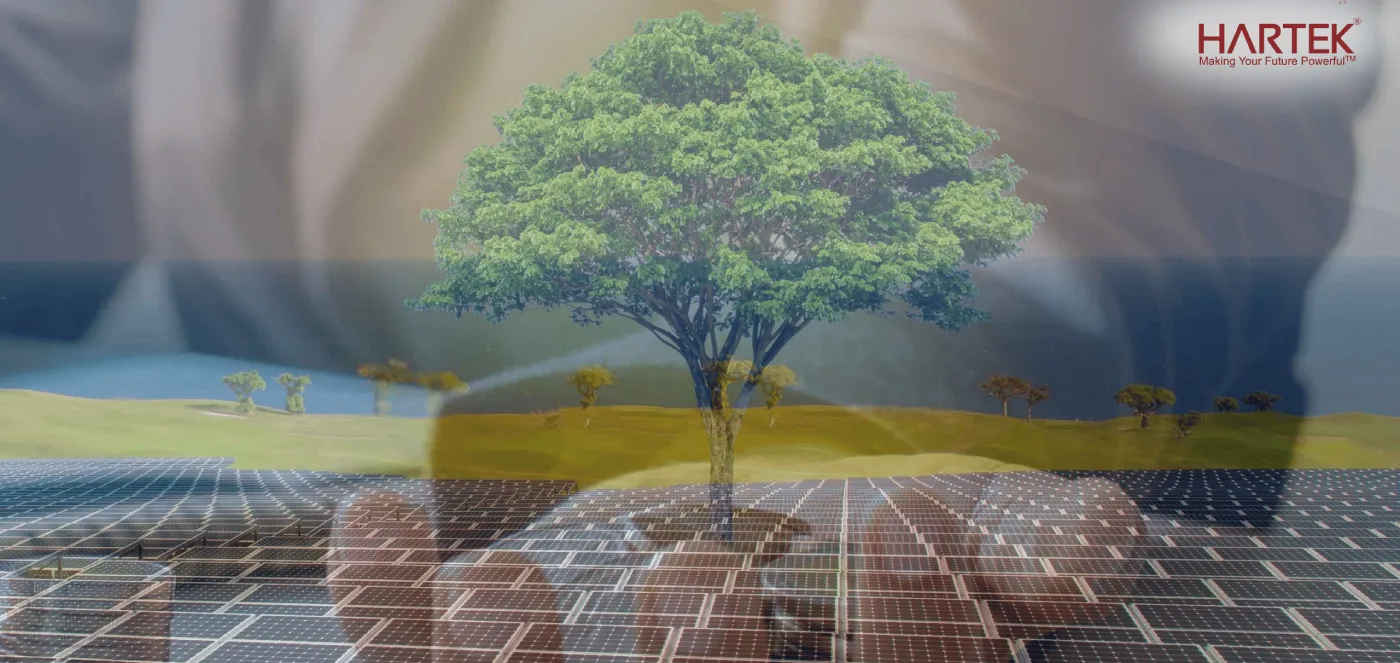India is making significant headway in the search for sustainable energy alternatives. A commitment is being made by the nation to minimize its addiction to fossil fuels and its carbon footprint, thereby raising the energy sharing of renewable energy. India has made impressive strides in recent years in driving forward its energy policy under a recent Ministerial Decision adopted by the cabinet. Underpinning this drive are environmental worries and a need to feed the increasing demands of a voraciously expanding population with ever more energy. Let’s dig into the details of India’s sustainable energy percentage.
The Current Scenario of India’s Renewable Energy Percentage
India has the fourth-largest renewable energy capacity in the world, which puts it among the leading nations for clean energy. As of 2024, India has made significant strides in this sector. These updated statistics will prove India is now at the forefront of renewable energy percentage efforts globally.
1. Electricity Generation:
In the fiscal year 2023-24, India produced approximately 219,817.14 million units of electricity from various renewable sources. This impressive figure reflects the country’s commitment to sustainable energy production.
2. Installed Renewable Energy Capacity:
As of November 30, 2024, India’s total installed renewable energy capacity stands at a combined 198.75 GW (including large hydro and nuclear). This capacity accounts for approximately 45% of the country’s total energy capacity.
3. Year-on-Year Growth:
Projections indicate a Compound Annual Growth Rate (CAGR) of approximately 8.2% for India’s renewable energy sector. This growth trajectory reflects the country’s commitment to expanding its clean energy capacity and reducing carbon emissions
These numbers highlight India’s ongoing journey toward a more sustainable future, emphasizing the importance of renewable energy options in meeting the nation’s power demands and mitigating environmental impact.

Different Sources Contributing to Renewable Energy Percentage in India
- The primary type of new energy supply in India is solar power. The abundant sunshine in this country makes it an excellent place for large-scale solar energy projects. Solar panels built on rooftops can be seen everywhere across India, and they are a common sight in the countryside.
- India’s wind farms are another key source of renewable energy. India’s long coastline and wind-swept regions have the potential to make this country a powerhouse in wind energy development. With significant investments in wind energy projects, India is now among the top wind power producers in the world. Wind energy is essential in transforming India’s renewable energy capacity and helping it diversify.
- India’s renewable energy includes biomass, small hydropower, and biofuels. The government hopes such alternative sources of energy will one day be able to supplement the country’s overall energy supplies.
The Indian government’s long-standing efforts show its seriousness about increasing the share of renewable energy in the overall energy mix. In the 2024 calendar year, India is projected to witness the addition of approximately 25 gigawatts of renewable energy capacity.
How Hartek Group is Contributing to Renewable Energy Percentage in India
India’s energy industry is blazing a new trail. This ambitious growth entails an investment of around ₹1,37,500 crore (approximately $16.5 billion). This surpasses the achievements of 2023, where 13.5 GW were added with an investment of ₹74,250 crore (nearly $9 billion).
Hartek Group and other companies are contributing significant efforts to India’s renewable energy campaign. Hartek Group is an Engineering, Procurement & Construction (EPC) company operating renewable energy projects. They were in charge of linking 7 GW worth of solar power to the grid.
Hartek Solar private limited, the renewable arm of Hartek Group, mainly focuses on industrial, commercial, and floating solar rooftop systems in design, engineering, and installation. One of India’s largest outsourcers of rooftop solar is Hartek Solar, which has over 100 MWp of rooftop solar installed around India. Hartek Solar also built North India’s largest floating solar plant in Chandigarh.
Hartek Group, however, does more than just put up solar panels. The group also goes around behind the scenes, ensuring that the electricity from their power plants flows smoothly and efficiently. By working with international leaders in the industry, they get the maximum technology for their projects.
Bottom Line
In recent years, the renewable energy industry in India has seen significant growth and development, primarily driven by government policy, technological innovation, and the growing awareness of environmental problems. Currently, renewable energy sources comprise a considerable proportion of India’s energy production, in a significant about-face toward cleaner, sustainable energies.
Frequently Asked Questions
-
What is India’s current renewable energy capacity?
As of 2024, India’s installed energy capacity stands at 198.75 GW, accounting for about 45% of the country’s total energy capacity. -
Which renewable energy sources contribute most to India’s energy mix?
Solar and wind energy are the leading contributors, along with biomass, small hydropower, and biofuels, diversifying India’s clean energy portfolio. -
How is Hartek Group contributing to India’s renewable energy sector?
Hartek Group has linked 7 GW of solar power to the grid and installed 100 MWp of rooftop solar, including North India’s largest floating solar plant. -
What is India’s renewable energy growth projection?
India is projected to add 25 GW of renewable energy capacity in 2024, with an annual growth rate (CAGR) of approximately 8.2%. -
Why is India investing heavily in renewable energy?
To reduce dependence on fossil fuels, cut carbon emissions, meet rising energy demands, and promote sustainable economic growth.
Share:
Explore More
Keep up-to-date with the most trending news stories that are shaping the world today.







